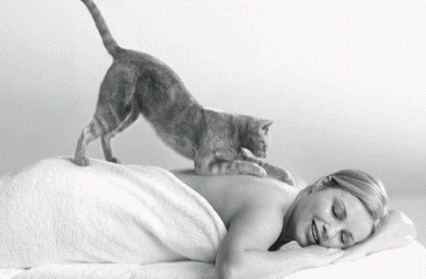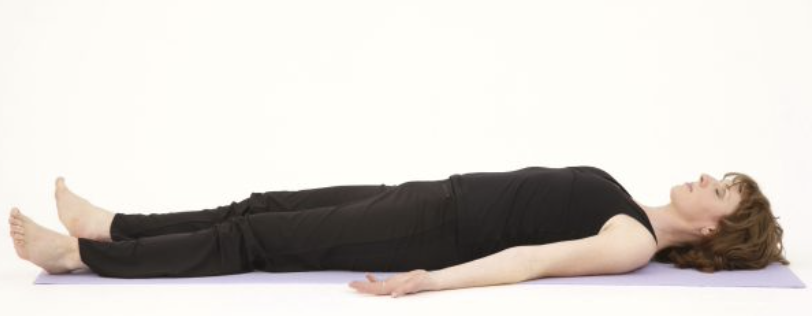
Our bodies are hard-wired to respond to threats, both real and perceived…
When we experience a “fight or flight” response, the nervous systems alerts the body to prepare to either fight or flee from an attacker. We begin to perspire, our heart rate and blood pressure increase and our hearing and vision become more sensitive.
Many people who are exposed to chronic stress live in a constant state of fight or flight, experiencing generalized anxiety that results in a variety of mental and physical problems.
Psychologists have found that if we can learn to control the response of our nervous system, we can avoid the uncomfortable physiological symptoms that occur when our mind reacts to a perceived threat that is not an actual threat.
By practicing conscious relaxation, we can reduce muscle tension and short circuit nervous system arousal. We can actually change our mindset so that perceived threats are seen for what they are – imaginary dangers that have no power over the mind. Mastering the art of relaxation can lead to greater self-esteem, confidence and serenity.
One of the most powerful relaxation techniques is also one of the easiest to learn. Progressive Muscle Relaxation (PMR) is a simple technique that fosters deep relaxation.
It was discovered and developed by a psychologist named Edmund Jacobson in the 1920s and it is still used widely throughout the world. Dr. Jacobson, who devoted a large part of his career to studying the relationship between the mind and the body’s neuromuscular system, was especially interested in the role that muscle tension plays in anxiety and relaxation.
Most people know when their muscles are very tense or knotted up, but are less aware of low levels of tension. Even low-level muscle tension can be a source of anxiety. Due to low-level tension and associated anxiety, most people don’t know what it means to completely relax.
Through his research in muscle physiology, Dr. Jacobson found that it is possible to become aware of muscle tension and learn to control it. Once we can control muscle tension, we have found the key to relaxation.

PMR grew out of Dr. Jacobson’s discovery that a muscle can be relaxed by consciously tightening it for a few seconds and then releasing it.
The practice of tensing and then releasing different muscle groups throughout the body can be used to achieve a deep state of relaxation.
Follow these steps to experience the relaxing effects of PMR:
Pick a quiet time and place to practice PRM, free from all types of distraction. Wear loose clothing and remove your shoes. Sit in a chair or lie down (some people find that they become so relaxed when lying down that they fall asleep).
Beginning with your feet and progressively working through the muscles of your legs, arms, abdomen, chest, neck, jaw and face, complete the following 2 steps…
- Step One: Focus on a muscle group, inhale and then apply tension by squeezing the muscles for about 8 seconds (for example, if you are working on the muscles in your hand, squeeze your hand closed).
- Step Two: Exhale and quickly release the muscle group from tension. Imagine tightness and anxiety flowing out of the muscle as you exhale. You should experience a pleasurable sensation of relaxation as the muscle group becomes loose.
Rest for about 15 seconds before moving on to the next muscle group.
As you complete these two steps on each muscle group, be aware of the difference in feeling between tension and relaxation.
When you have finished a PMR session, relax with your eyes closed for a few seconds and then stand up slowly to avoid a sudden drop in blood pressure.
When starting out, it may be difficult to isolate a particular group of muscles…
For example, when you apply tension to your hand, your arm and shoulder may also become tense. Of course, the parts of the body are interconnected so you will never be able to completely isolate one muscle group from another, but with time and practice you will become more adept at focusing on just one muscle group.
Now, here is the relaxation method you more than likely have never heard of. And it’s brilliant…

Dr. Jacobson identified relaxation of the muscles of the eye and jaw as being one of the keys to reducing anxiety. Since the eyes are associated with visualization and the jaw is associated with language, visual and verbal thought causes these muscles to tighten.
When you picture something with your “mind’s eye,” the muscles around your eyes actually experience a measurable amount of tension. Jacobson found that when he asked someone to imagine a dog running across their field of vision, their eyes tracked the movement.
He also found that when he asked someone to pronounce a word in their mind, there was tension in the muscles associated with speech.
Using PMR to learn how to release the muscles associated with seeing and talking can help turn off the internal imagery and chatter that often prevent us from achieving a truly relaxed state of mind.
By practicing PMR, you can learn to tell the difference between a tense muscle and a muscle that is completely relaxed.
With this knowledge, you can detect the muscle tension that accompanies anxiety and return to a state of relaxation. Learning how to relax will help you stay calm and free from anxiety.
After you have mastered PMR, you can use it to fight anxiety in any situation.
After Dr. Jacobson developed the theory and technique behind Progressive Muscle Relaxation, he continued to expand on it throughout his long life (he died in 1983 at age 95).
His final book, The Human Mind, was released shortly before his death. His relaxation techniques have been used by schools, the military and for medical procedures including dentistry and natural childbirth.
If you’re interested in the science behind Dr. Jacobson’s work on Progressive Muscle Relaxation, you can read a detailed description of his career and research over on this Progressive Relaxation website.
